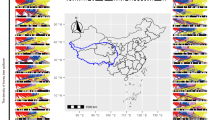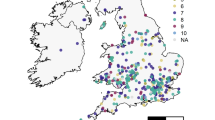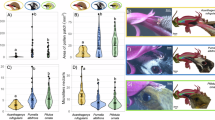Abstract
IN Britain, Plantago lanceolata is regarded as windpollinated1 and is figured by McLean and Ivimey-Cook2 as a typical example of a long-filament-type wind-pollinated species. It was therefore of interest to observe that around Brisbane this long-filament form is regularly worked for pollen by the honey bee wherever a dozen or so spikes are flowering within a few feet of each other.
This is a preview of subscription content, access via your institution
Access options
Subscribe to this journal
Receive 51 print issues and online access
$199.00 per year
only $3.90 per issue
Buy this article
- Purchase on SpringerLink
- Instant access to full article PDF
Prices may be subject to local taxes which are calculated during checkout
Similar content being viewed by others
References
Clapham, A. R., et al., Flora of the British Isles (Camb. Univ. Press, 1957).
McLean, R. C., and Ivimey-Cook, W. R., Textbook of Theoretical Botany, 2, 1289, 1281 (London, 1956).
Hyde, H. A., and Williams, D. A., New Phyt., 42 (2), 271 (1946).
Darwin, C., The Different Forms of Flowers on Plants of the same Species (London, 1877).
Harms, H., and Reiche, C., Die natürlichen Pflanzenfamilien (Plantaginaceae), 4 (3) G, 363 (1895).
Author information
Authors and Affiliations
Rights and permissions
About this article
Cite this article
CLIFFORD, H. Insect Pollination of Plantago lanceolata L.. Nature 193, 196 (1962). https://doi.org/10.1038/193196a0
Issue date:
DOI: https://doi.org/10.1038/193196a0
This article is cited by
-
Floral morphology and embryology of Helwingia (Helwingiaceae, Aquifoliales): systematic and evolutionary implications
Journal of Plant Research (2015)



